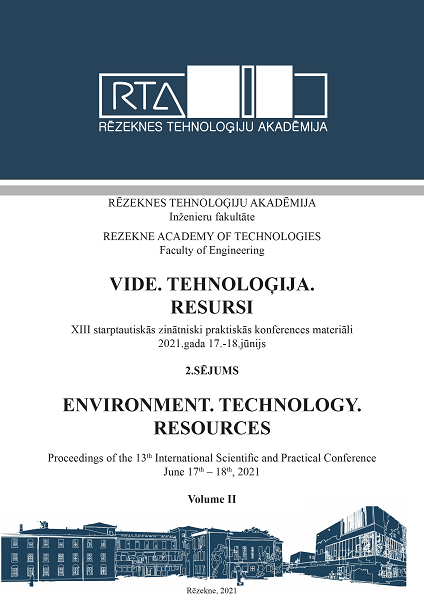E-LEARNING: DEVELOPING TOMORROW'S EDUCATION
DOI:
https://doi.org/10.17770/etr2021vol2.6604Keywords:
E-learning, education, E-learning limitations, new technologies, Artificial Intelligence, Neural NetworkAbstract
E-learning refers to the term to deliver education or training using digital resources. Computer-based learning, which is considered the keystone of today's E-learning concept, was born in the 80s. Earlier E-learning provides education using only text as with the development in technology it allows adding various forms, i.e., Graphical Text, Images, Video Conferencing etc. In today's time, the concept of is E-learning growing at a rapid pace. Improved bandwidth and growing technology helped in pushing the expansion of E-learning. Along with the university, large corporate companies are also resorting to E-learning. E-learning provides many advantages as compare to Instructor-led training (ILT). E-learning saves the times of travel as physical presence is not required. Education can be provided from anywhere at any time. E-learning is cost-effective also as the course, once developed, can be modified easily. There can some concern which can be faced by the trainer and leaners in future. Adopting E-learning will be a step towards saving the environment. It will be environmentally friendly as tablets will replace books; paper notes will be replaced with digital messages. Digital tools will help to reduce the burden of a student. Artificial Intelligence is a prevalent concept in computer science. A branch of AI, known as a Neural Network, is based on the human brain. The research's main aim is to review existing methods and analyse further possibilities of E-learning systems with neural networks.
Downloads
References
J. Morrison, “8 Ways Technology Improves Education,” February 24, 2018. [Online]. Available: 8 Ways Technology Improves Education - eLearning Industry. [Accessed: March 21, 2021].
R. Andrews and C. Haythornthwaite, Introduction to E-learning. Vancouver, 2007.
N. D. Oye, M. Salleh and N.A. Iahad, "E-Learning Methodologies and Tools," International Journal of Advanced Computer Science and Applications, vol. 3, no. 2, 2012.
M. Georgescu, "The Future of E-Learning: Designing Tomorrow's Education," COLLABORATIVE SUPPORT SYSTEMS IN BUSINESS EDUCATION, Babes Bolyai University of Cluj Napoca, 2006. [Online]. Available: The Future of E-Learning: Designing Tomorrow's Education by Mircea Georgescu :: SSRN [Accessed: March 12, 2021].
A. W. Bates, "Distance Education in a Dual Mode Higher Education Institution: A Canadian Case Study, "in Hope, A. and Guiton, P. (eds) Strategies for Sustainable Open and Distance Learning London: Commonwealth of Learning and RoutledgeFalmer Press, 2005.
E. Kaplan-Leierson, "E-learning glossary," 2006. [Online]. Available: https://www.puw.pl/sites/default/files/content_files/zasob_do_pobrania/355/elearn-gloss-learncircuits.pdf [Accessed: March 12, 2021].
L. R. Bruce and P.J. Sleeman, Instructional Design: a Primer, Greenwich: Information Age Publishing, 2000.
S. R. Hiltz and M. Turoff, "What makes learning networks ?," Communications of the ACM (45:5) 2002, pp. 56-59, 2002.
A. P. Chitra and M. A. Raj, "E-Learning," Journal of Applied and Advanced Research, 2018: 3, p. S12, 2018.
G. Singh, A. Mishra and D. Sagar, "An overview of artificial intelligence," SBIT journal of sciences and technology, vol. 2, no. 1, 2013.
upGrad, “Neural Network: Architecture, Components & Top Algorithms,” 6 May, 2020. [Online]. Available: https://www.upgrad.com/blog/neural-network-architecture-components-algorithms/ [Accessed: March 21, 2021].
IBM Cloud education, “Convolutional Neural Networks,” 20 October 2020. [Online]. Available: https://www.ibm.com/cloud/learn/convolutional-neural-networks. [Accessed: March 21, 2021].
N. Neelakandan, “Artificial-intelligence-based-platform-impact-future-elearning,” 6 October 2019. [Online]. Available: https://elearningindustry.com/artificial-intelligence-based-platform-impact-future-elearning.
[Accessed: March 21, 2021].


